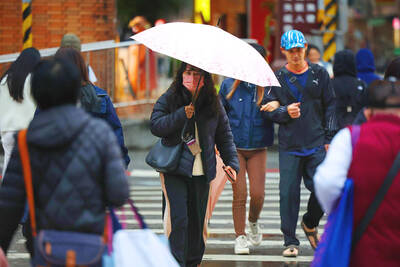The number of charities and the amount of donations they receive are soaring amid a wave of public generosity since the end of the Martial Law era, social welfare experts said yesterday.
Speaking to members of United Way, a global coalition of charitable organizations, academics from the social welfare department at National Chung Cheng University yesterday praised the nation for its commitment to charity, especially at the individual level.
"Concepts that pertain to charity, philanthropy and non-profits were weak when the Martial Law era ended in 1987," said Chung Cheng University professor Kuan Yu-yuan (官有垣). "But such concepts are now very strong here."
Directorate-General of Budget, Accounting and Statistics (DGBAS) figures show that the number of nonprofits in 1987 was 11,329.
150 percent increase
That figure, Kuan said, jumped nearly 150 percent to 28,077 nonprofits last year, while public donations have also soared.
A survey conducted by DGBAS in 2003 showed that nearly NT$43 billion (US$1.5 billion) is given by more than five million people yearly to various local charities, including United Way, Taiwan.
Of the many corporate, government and individual sponsors, ordinary citizens account for the biggest chunk of donated wealth, or nearly 40 percent, he added.
Natural disasters, such as the 921 Earthquake in 1999 and the Asian Tsunami in 2003, led to spikes in donation figures, Kuan added, citing DGBAS statistics.
In 1999, NT$63 billion worth of donations poured in to various nonprofits, much of it for earthquake victims and reconstruction. The public also gave NT$5 billion in 2003 in tsunami-related donations.
Generosity
Such generosity has allowed nearly 80 percent of local charities this year break even or enjoy a surplus, said Chung Cheng University researcher Wang Yung-tze (王永慈) yesterday at the United Way conference celebrating the nonprofit's 15th anniversary here.
"Founded in 1992, United Way, Taiwan, ushered in concepts of cooperative fundraising and distribution of donations," Wang said, referring to United Way's method of dispersing some of its donations to other local charities to help them provide social welfare services at the community level.
In 1990 -- its first year of soliciting donations locally -- United Way attracted a mere NT$1.14 million in donations, Kuan said.
Steady rise
However, that figure had steadily risen to NT$300 million as of last year, bringing total donations over 17 years of charity work to NT$2.3 billion, he said.
Among the many United Way organizations worldwide, United Way, Taiwan, leads them in soliciting donations online, United Way, Taiwan, chairman Chien Chun-an (
"Taiwan is special in that its people donate so much and so often," Chien said.

US climber Alex Honnold is to attempt to scale Taipei 101 without a rope and harness in a live Netflix special on Jan. 24, the streaming platform announced on Wednesday. Accounting for the time difference, the two-hour broadcast of Honnold’s climb, called Skyscraper Live, is to air on Jan. 23 in the US, Netflix said in a statement. Honnold, 40, was the first person ever to free solo climb the 900m El Capitan rock formation in Yosemite National Park — a feat that was recorded and later made into the 2018 documentary film Free Solo. Netflix previewed Skyscraper Live in October, after videos

Starting on Jan. 1, YouBike riders must have insurance to use the service, and a six-month trial of NT$5 coupons under certain conditions would be implemented to balance bike shortages, a joint statement from transportation departments across Taipei, New Taipei City and Taoyuan announced yesterday. The rental bike system operator said that coupons would be offered to riders to rent bikes from full stations, for riders who take out an electric-assisted bike from a full station, and for riders who return a bike to an empty station. All riders with YouBike accounts are automatically eligible for the program, and each membership account

NUMBERS IMBALANCE: More than 4 million Taiwanese have visited China this year, while only about half a million Chinese have visited here Beijing has yet to respond to Taiwan’s requests for negotiation over matters related to the recovery of cross-strait tourism, the Tourism Administration said yesterday. Taiwan’s tourism authority issued the statement after Chinese-language daily the China Times reported yesterday that the government’s policy of banning group tours to China does not stop Taiwanese from visiting the country. As of October, more than 4.2 million had traveled to China this year, exceeding last year. Beijing estimated the number of Taiwanese tourists in China could reach 4.5 million this year. By contrast, only 500,000 Chinese tourists are expected in Taiwan, the report said. The report

Temperatures are forecast to drop steadily as a continental cold air mass moves across Taiwan, with some areas also likely to see heavy rainfall, the Central Weather Administration (CWA) said. From today through early tomorrow, a cold air mass would keep temperatures low across central and northern Taiwan, and the eastern half of Taiwan proper, with isolated brief showers forecast along Keelung’s north coast, Taipei and New Taipei City’s mountainous areas and eastern Taiwan, it said. Lows of 11°C to 15°C are forecast in central and northern Taiwan, Yilan County, and the outlying Kinmen and Lienchiang (Matsu) counties, and 14°C to 17°C